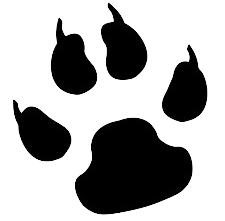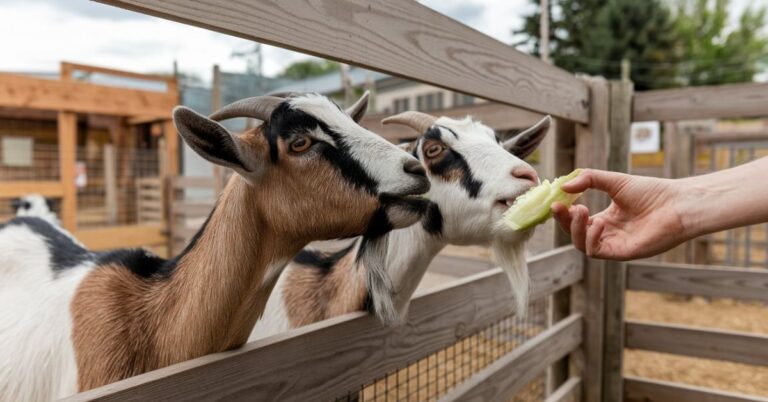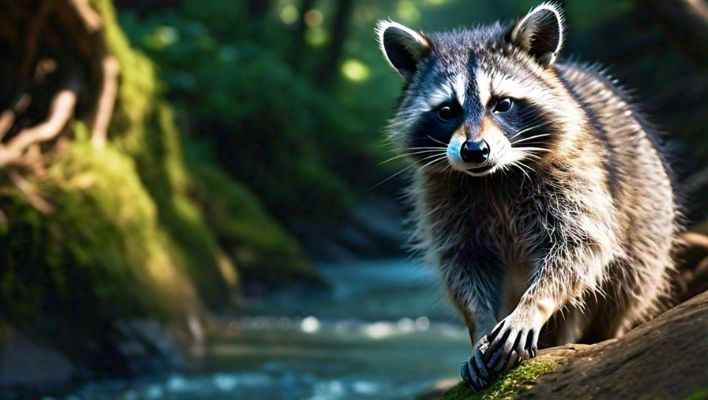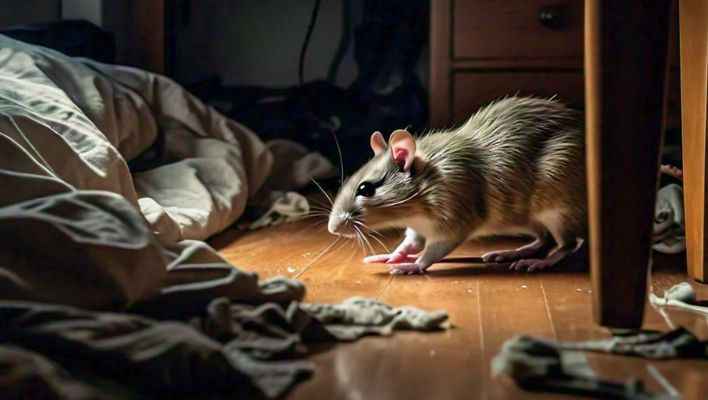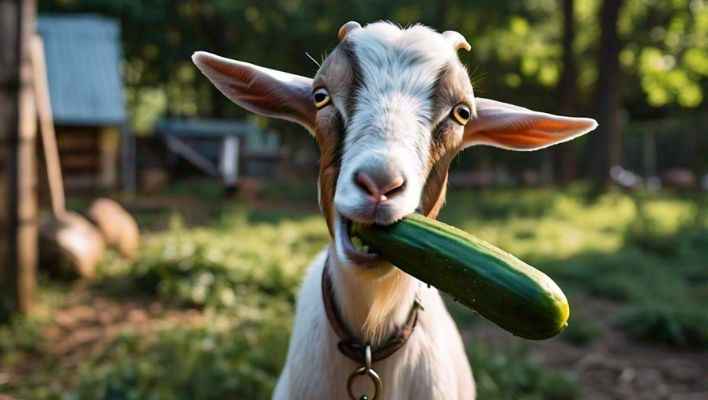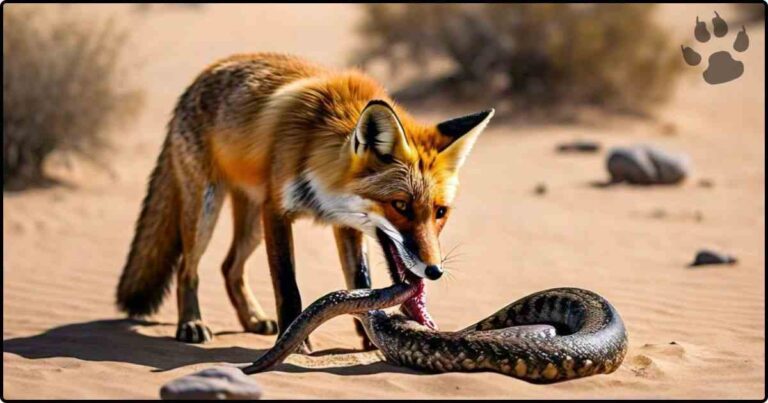Why do squirrels shake their tails? 7 Surprising Reasons

Squirrels are entertaining creatures, especially when you spot them in your yard. Their bushy appendage, the tail, is one of their most distinct features.
Although the tail might seem like just a fluffy appendage, it plays a primary role in their communication. Squirrels use it to express a range of emotions, from joy to fear and even apprehension.
You must have often noticed that when a squirrel sees you, it often shakes its tail. This question must have come to your mind during this time: Why do squirrels shake their tails?
In such a situation, the main reason for the squirrel to shake its tail is that it’s feeling alert or trying to warn others of potential danger.
In addition to its role in communication, the tail serves many other important functions. It helps squirrels balance as they maneuver quickly along tree branches and power lines, making it essential for their survival.
It also plays a critical role in keeping them warm during the winter months when they settle down in their dens. The bushy tail provides extra insulation, helping them endure the cold. Whether they’re sitting still or standing on their back legs, the tail continues to be an essential tool for interaction with their environment.
When a squirrel is wagging its tail, it means the animal has something to say or is trying to communicate. Squirrels are often seen in mischief, shaking their tails as they go about their business.
You might observe them shaking their tails while looking out of a window or in your attic. This behavior is also linked to their energy and the need to express themselves.
The tail allows them to communicate more than just emotions—it helps them interact with other animals and respond to threats. With their distinct species characteristics, squirrels shake their tails in a quick, dance-like movement that brings a touch of cuteness to their playful behavior.
Reasons Squirrels Shake Their Tails
There are many answers to the question of why do squirrels shake their tails? These answers are explained in detail below.
1. Tail-Shaking During Mating Season

During mating season, male squirrels use their tails to display a variety of behaviors aimed at attracting a female. These unusual motions, including shaking, trembling, and shivering, serve as signals to potential mates.
The tail becomes a crucial tool in the wooing process, with the squirrel’s tail often flicking, swishing, or even twitching to grab the eye of a desired mate. This movement is a kind of visual serenade, showcasing the male’s readiness and willingness to engage in a dance to win the attention of the female.
It’s a combination of attraction and frustration as males compete for the attention of the females. Throughout mating season, which spans from late February to early May in regions like the tri-state area, these behaviors intensify.
The tail of a male squirrel not only serves to attract the female but also signals to other males that he is guarding his territory. When another male enters the scene, the squirrel may use its tail to guard its space, creating an atmosphere of competition.
The tail is used to check if the female is interested, and the female may respond by either approaching or keeping her distance. This behavior continues with repeated flicks and quivers, signaling readiness and alerting others to stay away.
The tail of a male squirrel is central to this courtship display, acting as both a physical extension and a signal of dominance and attraction. Males use it to acknowledge the female’s response and to communicate their desire.
Whether twitching in frustration or swishing as a fluffy extension, the tail plays a key role in the mating dynamics of these animals. Males must compete not only for the female’s attention but also to guard their territory against another male.
This technique of tail movements ensures that the male squirrel stands out during the mating season, offering a clear visual signal to all other animals involved.
2. Alarmed Responses

When a squirrel is startled or angry, it instinctively flicks its tail to communicate its heightened state of alertness. This tail flick is an immediate response to perceived threats and plays a crucial role in the squirrel’s defense system.
The flick is often accompanied by chittering noises, further signaling the presence of danger. Predators, such as humans, bobcats, foxes, and coyotes, can trigger a panic response in the squirrel, causing it to flee rapidly or take other evasive actions.
The first time I saw a squirrel wagging its tail in my yard, I was taken aback. It was only later that I learned it was a sign of alertness – a small, yet fascinating gesture in the animal kingdom!
The flicking of the tail also serves as a form of communication, warning other animals to stay away or watch out. In addition to signaling immediate danger, the tail-flick helps the squirrel communicate the need to protect its territory and food.
The squirrel’s tail acts as a powerful tool for warning others to be alert and cautious. When the squirrel detects a predator, it will use its tail to help flee, signaling to nearby squirrels to take cover.
This behavior is an essential part of the squirrel’s natural behaviors to ensure its survival in the wild, keeping the movement swift and effective for quick escape.
3. Communication

Squirrels rely heavily on their tail as a primary form of communication. While you might hear the occasional chittering or noises coming from the trees, squirrels are often quiet creatures.
Their tail movement is their go-to method to express a wide range of emotions, such as apprehension, joy, interest, and anger. Unlike humans, who use verbal language, squirrels communicate these feelings through nonverbal actions, like the iconic tail-flick.
Wildlife experts have become quite adept at reading these tail cues to understand whether a squirrel is feeling playful or defensive or even if it’s preparing to run or attack. The tail is an effective tool for a squirrel’s survival, especially when it comes to expressing emotions in wild and unpredictable situations.
For example, a squirrel might use a rapid tail flick to signal danger or as a sign of defensive behavior when it feels threatened by a predator.
Even though squirrels are often seen as cute and playful, they can become destructive when in manmade structures, chewing through wood, insulation, and wires to build their nests and file their teeth.
Understanding these subtle tail movements is crucial for safe and effective wildlife removal, as squirrel behavior is not always as innocent as it seems.
While they might appear vulnerable, their ability to defend themselves or their territory with such nonverbal cues makes them fascinating and complex creatures.
4. Warning Other Squirrels

When squirrels sense a predator nearby, they flick their tail very fast as a clear warning to other squirrels.
This behavior is often seen when a squirrel spots a snake or other dangerous creature that is standing still or moving through their territory.
The tail serves as an alert, signaling to nearby squirrels to stay away or avoid the danger. Even when a squirrel has a nut in its mouth, it may still flick its tail as a precautionary measure, making sure that other squirrels stay clear of its food.
This rapidly moving tail also indicates that the squirrel is trying to warn others of a potential threat. It’s a vital form of communication for squirrels of the same species, helping them stay safe from threats that might be lurking nearby.
Squirrel removal experts have seen this behavior many times as squirrels use their tails to alert each other of danger, ensuring their survival in the wild.
5. Defending Their Territory

When squirrels feel another animal is getting too close to their turf, they use their tails to communicate their territorial boundaries. Not all species of squirrels are equally inclined to defend their territories.
For example, the common grey squirrel, found in areas like Ajax, is generally cool with sharing its favourite tree with other squirrels. However, the red squirrels, which also make this area their home, take a much stronger stance when it comes to protecting their space.
If you notice these squirrels flicking their tails, it could indicate they are warning off a predator or signaling that they’re ready to confront competition. If you’re facing a situation where a squirrel has made its way into your walls, they may also be feeling threatened and territorial.
To learn how to safely get the squirrel out of your wall, check out our article on how to get the squirrel out of the wall of the house. The red squirrels are especially known for their territorial nature.
Their tails are used to assert dominance and defend their territory from other animals, including other squirrels. In contrast to the grey squirrel, which might tolerate the presence of others in its area, the red squirrel will actively use its tail to tell others to stay away.
Whether it’s dealing with a predator, an intruding squirrel, or just keeping other critters at bay, the flicking of the tail serves as an important signal to maintain their territories and prevent unwanted visitors from infringing on their space.
6. Walking a High Wire

When squirrels are climbing or jumping across narrow branches or powerlines, their bushy tails play a crucial role in helping them survive these harrowing feats.
The tail acts as a balance to their bodies, allowing them to maintain balance while moving quickly from one point to another. Whether they are running across a wire or jumping to the next tree, squirrels use their tails to stay steady, preventing them from falling or losing control.
The tail moves continuously, adjusting as the squirrel navigates these tricky paths, ensuring a safe landing.
In moments of high-speed movement, the tail serves as a kind of rudder, helping squirrels with steering and making adjustments in open space to ensure a safe landing. Squirrels rely on this natural tool to maneuver and maintain balance during these difficult tasks.
The tail is a vital part of their communication system, too, sending signals to other squirrels as they navigate these acrobatic challenges. It’s incredible how something so simple can make these agile creatures so efficient at surviving in the wild.
7. Breaking a Fall

When a squirrel overshoots its target or tumbles from a powerline, its tail becomes incredibly handy in breaking the fall.
Acting like a parachute, the squirrel’s tail helps slow down the momentum of the fall, allowing the animal to land safely.
The tail works by spreading out to distribute the weight of the squirrel, which reduces the impact on its body when it hits the ground.
Without this essential tail movement, squirrels would be at a much higher risk of injury from falls, especially when navigating heights of high metres.
The tail not only helps soften the blow but also reduces the force of the fall, increasing the squirrel’s chances of survival. When a squirrel lands, the tail works to balance and stabilize the animal, ensuring that it can quickly get back on its feet.
This ability to survive such falls is a crucial part of how squirrels navigate their wild environments, where they may need to make quick jumps or adjustments in mid-air.
The squirrel’s tail is a true lifesaver in these situations, helping them manage the unpredictable nature of their surroundings.
Why do squirrels shake their tails up and down?
Squirrels often shake their tails up and down as a communication tool to deter and confuse predators. Researchers have observed that when a squirrel is approached by a snake or other threats, it will wag or fluff its tail dramatically.

This sudden motion can distract or disorient the predator, buying the squirrel precious seconds to escape. It’s a natural strategy that helps them evade danger and gives them a better chance at survival.
Why do squirrels shake their tails rapidly?
When a squirrel shakes its tail rapidly, it is usually sending a signal of warning to nearby predators like hawks, cats, or snakes.
This shaking tail acts as a visual alarm, not only for the squirrel itself but also for its fellow squirrels, alerting them to danger.
The rapid tail movement functions like a neon sign in the animal world, telling others to stay alert and be ready to escape from any threats that may be approaching.
What Does It Mean When a Squirrel Stares at You and Moves Its Tail?

When a squirrel stares at you and moves its tail, it is often trying to communicate. If you’re feeding the squirrel or have fed it in the past, the squirrel may have become accustomed to these interactions and may even approach you in hopes of getting free treats.
However, this behavior can also indicate fear or stress. A squirrel might twitch or flick its tail when it feels threatened or uncomfortable, signaling that it wants to back off or keep its distance.
The tail is a tool for the squirrel to express frustration, annoyance, or even unpredictable emotions. In some cases, this behavior could be a sign that the squirrel is in distress.
If it’s sick or injured, the squirrel may use its tail to signal its discomfort. This can happen when a squirrel is experiencing extreme pain or discomfort. Additionally, if the squirrel has babies nearby, it may be more protective and aggressive, using its tail to warn off perceived threats.
While squirrel attacks are uncommon, they can occur when a squirrel feels cornered or endangered, especially if it perceives a predator or person as a threat to its territory or food stores.
Conclusion:
In conclusion, squirrels use their tails for much more than just balance; they are vital communication tools that help these animals navigate their environment.
Whether it’s shaking their tails to signal danger, attract a mate, or defend their territory, their bushy appendages are essential to their survival.
By flicking or twitching their tails, squirrels convey emotions such as fear, aggression, or excitement, ensuring that they can stay alert and interact with their surroundings effectively. This remarkable behavior highlights the sophistication of these seemingly simple creatures.
FAQ’s:
What does it mean when a squirrel rattles its tail?
When squirrels rattle their tails, they are typically expressing frustration or anger. This behavior is often seen when they are angry or feeling threatened. The twitching of the tail, along with the chattering of their teeth and sometimes a guttural growl, signals to others that the squirrel is upset. Squirrels, as expressive rodents, use this to warn others and show agitation, especially if they feel cornered or stressed.
What do squirrel tail positions mean?
Squirrel tail positions are key indicators of their emotional state and intentions. Wagging or waving the tail can signal excitement or alertness, while rapid flicking often indicates agitation or aggression. When squirrels feel threatened or when another squirrel begins to encroach on their claimed territory, they may fluff up their tails or hold them low to convey dominance. This behavior also helps squirrels communicate their hierarchical status, with dominant squirrels using their tails to assert control in a relaxed manner.
Why Do Squirrels Shake Their Tails Vigorously?
When squirrels shake their tails vigorously, it’s a response to a threat, like a predator such as a cat or snake. This movement is intended to let the predators know they’ve been spotted. Often, tail flagging is accompanied by vocalizations, including kuks and sharp calls in rapid succession, to signal danger and deter the threat. The intense shaking helps squirrels warn others and show they are ready to fight back if needed.
Why do squirrels shake their tails at you?
When squirrels shake their tails at you, it’s often a sign of being startled or scared. They may be flagging their tails, which can be a response to feeling threatened or trapped. The tail can twitch frantically as they try to escape or express panic. If they feel their young are at risk or they are cornered, they might shake their tails as a warning or to signal distress. This is an instinctive response to potential danger.
Why do squirrels shake their tails when they’re around humans?
Squirrels shake their tails around humans as a sign of alertness or to express caution. This behavior can indicate that the squirrel feels threatened or stressed or is trying to communicate discomfort or a need for space. It’s a way for the squirrel to signal potential danger or express agitation when it feels unsure or cornered.
